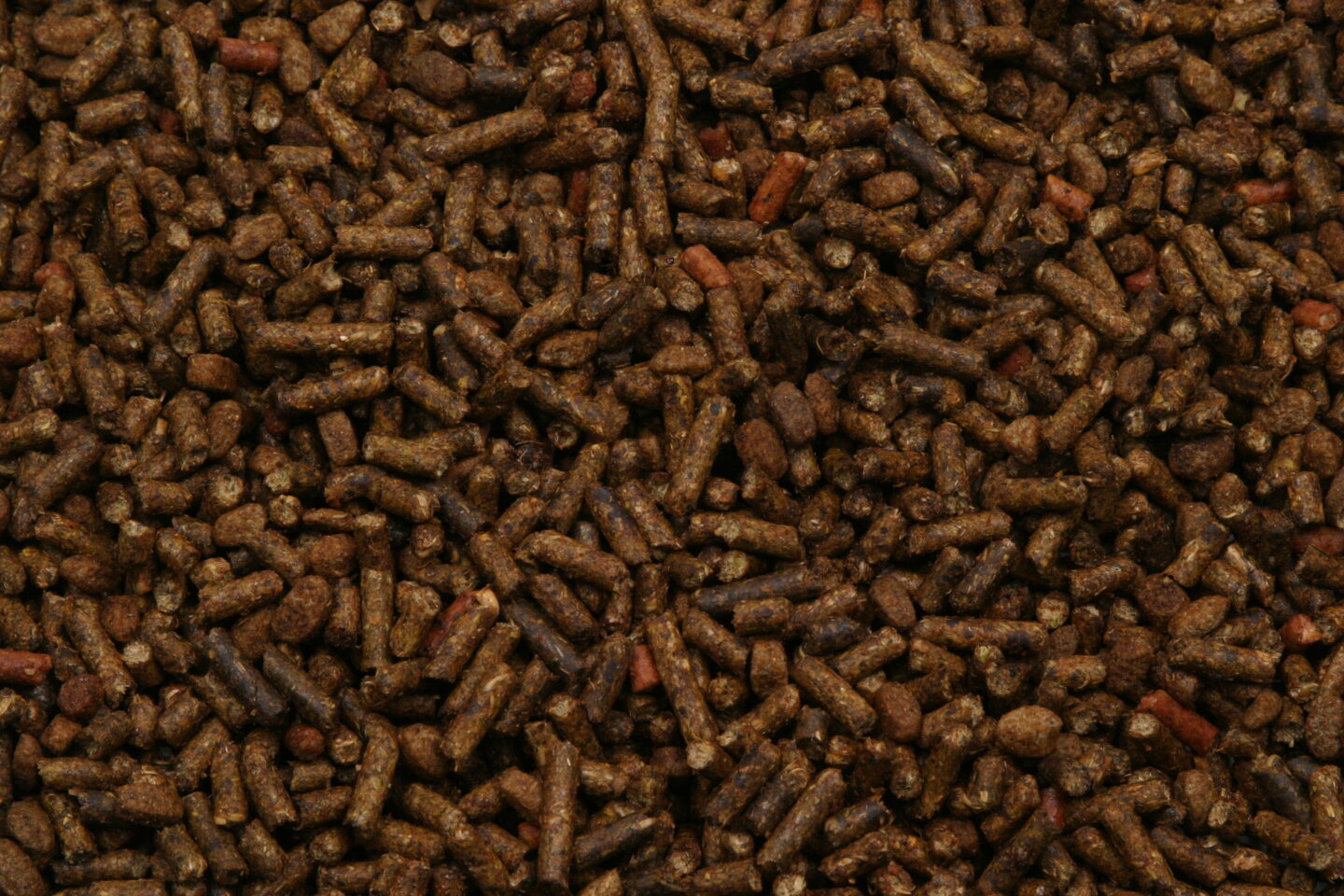When Should I Feed a Complete Horse Feed?

A complete feed is a fortified grain/forage mix that is formulated with high quality fiber sources to raise the total percent fiber in the feed, so that reduced hay feeding can be done safely. Some fiber sources in complete feeds include alfalfa, beet pulp, and soy hulls. These are all good digestible fiber ingredients for horses.
Reasons to Consider Feeding a Complete Feed
Addressing Challenges in Hay Availability and Quality
- You have a horse with poor teeth or no teeth that can no longer chew and swallow hay. This can be a young or old horse.
- Good quality hay is hard to find, obtain, or pay for. This situation will most likely occur in:
- Drought situations when plants aren’t growing or they are very mature when they get tall enough to cut. When a plant gets too mature it has high levels of lignin that can’t be digested by the horse leading to digestive upsets or increased risk of colic. Plants also lose nutrient content the more mature they get.
- Extremely wet conditions because it may be more mature by the time a farmer gets good weather to cut it and flooding can also bring debris onto fields that can be harmful to your horse.
- Situatinos where hay gets more expensive as fertilizer and fuel costs rise.
Cost-Effectiveness of Complete Feeds in Certain Situations
- There is a lot of hay wasted from handling, transporting, ect. More hay is wasted when horses are fed round bales. When hay is expensive and there is a lot of waste, complete feeds may be more cost effective.
- Hay is hard to handle and round bales/large square bales require a tractor for handling and other equipment such as a flatbed trailer. Equipment requires fuel, tires, maintenance, ect. The cost of handling hay should be brought into consideration when cost is a major factor in feeding.
Importance of Long Stem Forage in a Horse’s Diet
Long stem forage is an important part of the horses diet and a good source of forage should comprise of at least 50% of the horses daily intake when possible. However, when any of the above conditions exist it may be necessary to feed a complete feed only or reduce the amount of hay being fed. A horse that can no longer chew hay will need to get all of his daily requirements from a complete feed that is easy to eat such as a senior complete feed with softer pellets that can also be fed as a wet mash. If hay shortage, hay cost, or drought is the reason you feed a complete feed you may want to continue feeding some hay in the diet for long stem forage if possible.
Reading and Following Feeding Recommendations for Complete Feeds
It is important to read and follow the feeding recommendations when buying a complete feed, and they should list the recommended feeding amount both with and without hay on the tag. As you decrease the amount of hay, you will need to increase the amount of complete feed. Here are two examples of complete feeds and how much to feed a 1,000 lb maintenance type horse with no hay and with hay/pasture.
Feeding Guidelines for Senior Horse Feeds
- A senior horse feed – generally a highly digestible and highly palatable product that can be fed as a complete feed, and is designed for older horses.
- A 1,000 lb maintenance type horse would receive 12 – 14 lbs of a senior feed, if no additional hay is fed.
- The same horse, if it was being fed hay, would receive 5 – 7.5 lbs of the senior feed.
Utilizing Traditional Complete Horse Feeds
- A traditional complete horse feed – known as “hay replacers” or “hay stretchers” – are a complete feed that combines high quality roughage and grains in a pelleted form. It can be fed as a complete feed or with forage.
- If no hay is fed, a maintenance type horse would receive 1.5 lbs per 100 lb body weight. A 1,000 lb horse is recommended to get 1,000/100 = 10 x 1.5 lbs = 15 lbs of a complete feed.
When feeding along with hay or pasture, a typical recommended amount to feed a maintenance type horse 0.5 lb per 100 lb body weight or 5 lbs.
- If no hay is fed, a maintenance type horse would receive 1.5 lbs per 100 lb body weight. A 1,000 lb horse is recommended to get 1,000/100 = 10 x 1.5 lbs = 15 lbs of a complete feed.
Proper Feeding Practices for Complete Feeds
Whether you chose to feed a complete feed with hay or without, it is important to feed the recommended amount and make adjustments as needed depending on if your horse is an easy or hard keeper. It is also important to provide free choice salt and clean, fresh water at all times. Complete feeds should be split into two or more feedings. Horses should be switched slowly from one feed to another and also when eliminating hay from the diet. When reducing the amount of hay fed, it is recommended to reduce hay over 1-2 weeks.
Ready to ensure your horse is getting the optimum nutrition at feeding time, every time? Find the perfect feed formulated specifically for horse’s needs with our Feed Selector Tool.
